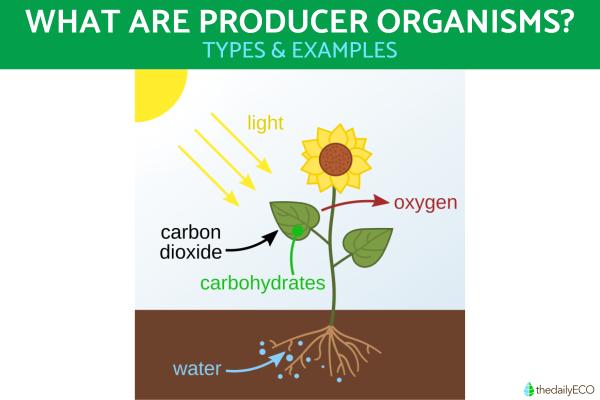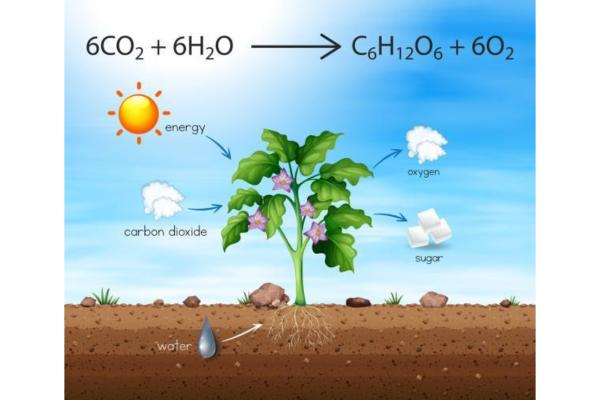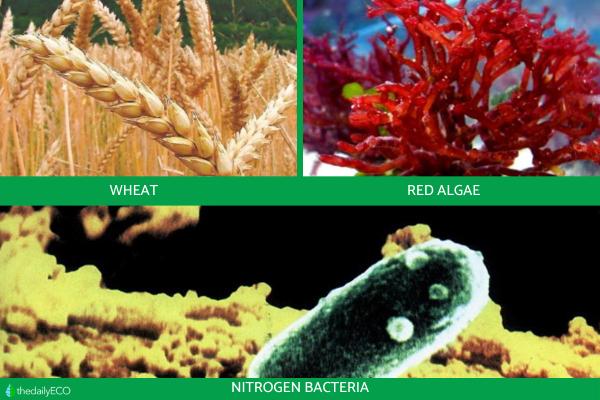
Our planet's ecosystems are composed of living organisms which exist within various biotopes, the specific geographical areas which contain them. Within these biotopes, biocenosis occurs. Biocenosis refers to how all these organisms interact with each other to maintain balance in their respective biotopes. These interactions manifest in myriad ways thanks to the different physical and chemical properties they each possess. They are complex and difficult to understand, but each organism plays their own role. Producing organisms are autotrophs, living beings which are essential for making food. This is one of the most vital aspects of any ecosystem.
At thedailyECO, we discover more about autotrophs by asking what are producer organisms in biology? We look at the importance of autotrophs in an ecosystem, how they produce food energy and what examples we can find in nature.
What are producer organisms in biology?
Also known as autotrophic organisms or simply autotrophs, producer organisms are those capable of transforming inorganic matter into organic matter. They do so for the purpose of providing energy. This energy is used as food or sustenance by other organisms. The inorganic matter they transform includes carbon dioxide and water. Our related guide explains more about the difference between organic and inorganic matter.
The most common source of inorganic matter which is used by producer organisms is solar energy. These organisms transform the light energy from the sun into other forms of energy thanks to a process known as photosynthesis. There are also chemosynthetic organisms that obtain energy by oxidizing certain inorganic compounds. Producer organisms that perform photosynthesis due to possessing photosynthetic pigments, not only produce organic matter, they also release oxygen. This is essential for life on Earth.
Producer organisms are the only ones capable of producing organic matter from inorganic matter. This is the basis for the food chain of a given ecosystem, since they provide food to consumer organisms.
Discover more about food chains and trophic levels with our article asking what are ecological pyramids?

Where do producing organisms get their energy from?
We have already alluded to the importance of photosynthesis for autotrophs. This is the primary source of energy on our planet, but it is not the only one. For this reason, we can say there are two main types of producer organisms depending on the type of matter they use to generate energy. They are the following:
- Photosynthetic producer organisms: these organisms are capable of using solar energy to transform inorganic substances such as carbon dioxide and water into organic matter. Plants that contain chlorophyll carry out photosynthesis.
- Chemosynthetic producer organisms: chemosynthetic organisms obtain energy by oxidizing simple inorganic substances such as ammonia and sulfur. They do not require light as an energy source. An example of this type of organism is chemosynthetic bacteria.
Discover another type of bacteria which can survive inhospitable environments with our article asking what are halophilic bacteria?

Examples of producer organisms
Producing organisms are only one of the types of organism in a given biotope. Consumers consume the energy producers produce and decomposers get rid of waste material. Without producers, these other organisms would not be able to perform their functions. They are the initial sources of energy needed to create the flow of energy through trophic webs.
We have already explained the different types of autotroph based on the matter they use to convert energy. We can also group producer organisms with other factors such as the type of ecosystem they inhabit. With this in mind, we look at some examples of producer organisms:
Examples of photosynthetic producer organisms
- Cypresses
- Ferns
- Wheat
- Cacti
- Chamomile
- Oak trees
Examples of aquatic producer organisms
- Red algae
- Unicellular algae
- Cyanobacteria (also known as blue-green algae)
Unicellular algae include ochromonas and diatoms, as well as xanthophyceae which are also known as yellow-green algae.
Examples of chemosynthetic producer organisms
- Colorless sulfur bacteria
- Nitrogen bacteria
- Iron bacteria
- Hydrogen bacteria
Learn more about aquatic producer organisms with our article asking what are cyanobacteria in biology?
What would happen if there were no producer organisms?
As we mentioned earlier, living beings that produce food are the basis of the food chain. If they disappear, it would not only produce a decline in the food chain would occur, ecosystems as we know them would crumble.
The trophic or food chain is made up of links in which there is a transfer or flow of matter and energy. Producer organisms are the first link in this chain. If this first link disappears, the second link would disappear as a consequence. This second link is the one made up of primary consumers. When these disappear, the secondary consumers would disappear and so on until life on Earth becomes extinct.
Without primary producers, oxygen would not be generated and carbon dioxide levels would increase. This is another factor that would make the development of life on Earth impossible. This could be said to mean that producing organisms are essential.
All producer organisms don't need to be destroyed for human, animal and much of the plant life in the world to be destroyed. This is why preventing the negative effects of global climate change is so important. The destruction of producing organisms is one of the main threats caused by climate change and imbalance.
Discover the different types of nutrition in our related article.

What are producer, consumer and decomposer organisms?
Within the food chain there are different types of organism. We explain these organisms and their roles according to the order they have in the chain:
- Producers: those which transform inorganic matter into organic matter thanks to an energy source such as the sun.
- Primary consumers: these are herbivorous species, heterotrophic animals that feed on producer organisms to obtain the organic matter and energy they need for their development and survival. You can dive deeper with our article asking what are heterotrophic organisms?
- Secondary consumers: this group includes carnivorous and omnivorous species. They are also heterotrophic species and obtain organic matter by feeding on primary consumers and producers.
- Tertiary consumers: these are carnivorous species, heterotrophic organisms that feed on secondary and some primary consumers to obtain their organic matter.
- Quaternary consumers: these are species found at the highest level of the food chain, able to feed on all consumers. An example would be humans, who even feed on producers.
- Decomposers: these are organisms that act on dead organisms. These organisms are primarily fungi and bacteria. Their function is to transform organic matter into simpler matter. Mineralizing organisms then act on them. These organisms transform this matter into inorganic or mineral matter. The inorganic matter is reincorporated into the environment and utilized by producing organisms, completing the matter cycle in the process.
You can learn more about the importance and examples of the kingdom fungi in biology with our related guide.
If you want to read similar articles to What Are Producer Organisms in Biology?, we recommend you visit our Biology category.